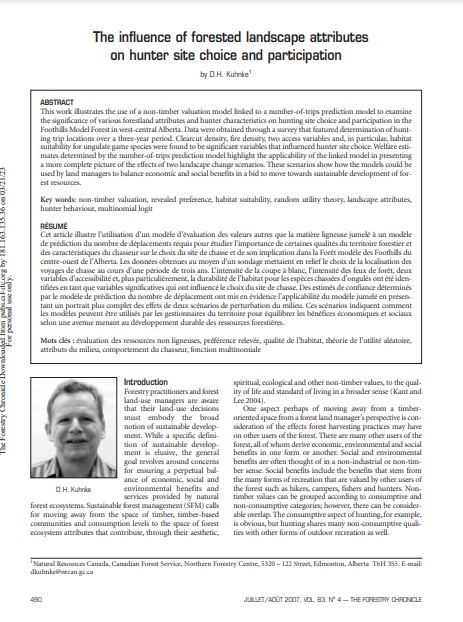The influence of forested landscape attributes on hunter site choice and participation
Bosque Modelo:
Foothills
Temática:
Desarrollo humano
Tipo de documento:
Artículo científico
Resumen
This work illustrates the use of a non-timber valuation model linked to a number-of-trips prediction model to examine the significance of various forestland attributes and hunter characteristics on hunting site choice and participation in the Foothills Model Forest in west-central Alberta. Data were obtained through a survey that featured determination of hunting trip locations over a three-year period. Clearcut density, fire density, two access variables and, in particular, habitat suitability for ungulate game species were found to be significant variables that influenced hunter site choice. Welfare estimates determined by the number-of-trips prediction model highlight the applicability of the linked model in presenting a more complete picture of the effects of two landscape change scenarios. These scenarios show how the models could be
used by land managers to balance economic and social benefits in a bid to move towards sustainable development of forest resources.
Información Bibliográfica
Autor:
Kuhnke, DH.
Revista:
Forestry Chronicle
Año:
2007
N°:
4
País :
Canadá
Páginas:
490 - 501
Volumen:
83
Idioma:
Español
Palabras claves
non-timber valuation, revealed preference, habitat suitability, random utility theory, landscape attributes, hunter behaviour, multinomial logit





